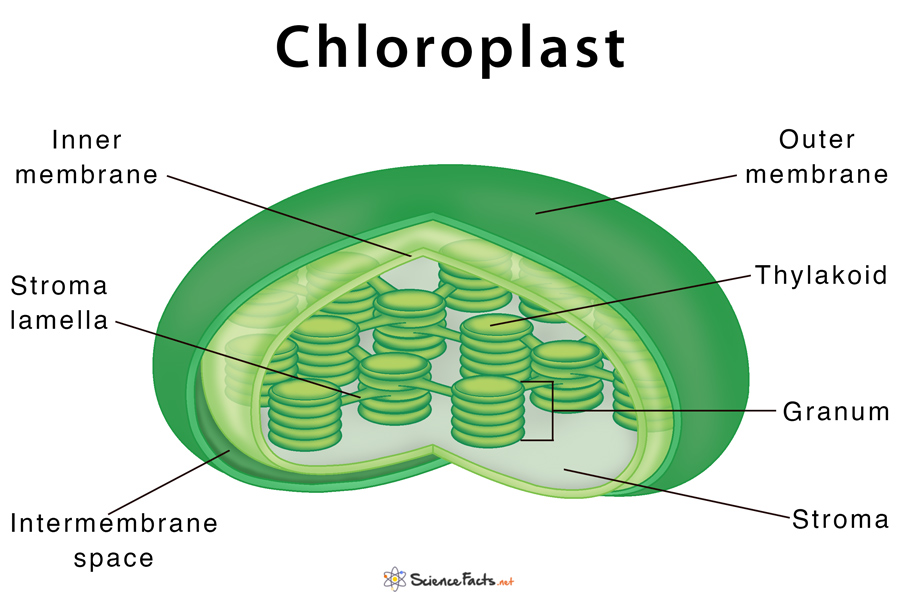Chloroplast
What is Chloroplast
The chloroplast is a type of cell organelle called plastids found in plants and blue-green algae. It contains the pigment chlorophyll that traps the light energy of the sun to convert them to the chemical energy of food by a process called photosynthesis. The word ‘chloroplast’ is derived from the Greek words ‘chloros’, which means ‘green,’ and ‘plastes’, meaning ‘the one who forms’.
Hugo von Mohl first discovered chloroplast in 1837, while Eduard Strasburger, in 1884, adopted the term ‘chloroplasts’.
Where is Chloroplast Found in Plants
It is found in all green parts of a plant such as leaves, stems, and branches and in blue-green algae. Within the cell, they are located in the cytoplasm.
Structure and Parts
In higher plants, they are generally biconvex or planoconvex in shape while in others it varies from spheroid, filamentous, discoid to ovoid. The average size of the chloroplast is 4-6 µ in diameter and 1-3 µ in thickness. It has the following parts:
- Double Membrane: Outer and inner membrane
- Intermembrane Space: Present between the two membranes with a space of about 10-20 nm
- Thylakoid: Flattened disc-shaped structures, they are the fundamental unit of chloroplast
- Grana: Stacks of thylakoids. Each granum contains approximately 10-20 thylakoids
- Stroma: Colorless fluid surrounding the grana and present inside the inner membrane, similar to the cytoplasm of a cell
- Stroma Lamella: Connects adjacent thylakoid sacs or grana
- DNA: Genetic material of chloroplast
Functions
The two main functions of the chloroplast are: 1) synthesizing food using solar energy by the process of photosynthesis, and 2) producing energy in the form of high-energy phosphate molecule – ATP.
Other Important Functions:
- Producing NADPH, the reducing agent required to synthesize glucose in the dark reaction of photosynthesis and also in other biosynthetic pathways
- Releasing molecular oxygen (O2) by photolysis of water
- Providing protection to plants against pathogens along with nucleus, cell membrane and endoplasmic reticulum of the cell
- Reproducing independently from the rest of the cell, since it has its own DNA
- Producing amino acids and lipids required for the production of chloroplast membrane
FAQs
Ans. Prokaryotes including bacteria do not have chloroplasts.
Ans. Animal cells do not perform photosynthesis and hence do not have chloroplasts.
Ans. Fungi are heterotrophs that do not perform photosynthesis and hence do not contain chloroplast.
Ans. Chlorophyll is located within the thylakoid membrane and space in between the thylakoids.
Ans. They are green because of the presence of the pigment chlorophyll, which reflects the green color of the visible light.
Ans. There are about 100 chloroplasts present in a typical plant cell.
Ans. Chloroplasts capture sunlight using the green pigment called chlorophyll. They absorb light of specific wavelengths and transfer them to other carrier proteins to perform photosynthesis in plants.
-
References
Article was last reviewed on Wednesday, July 15, 2020




